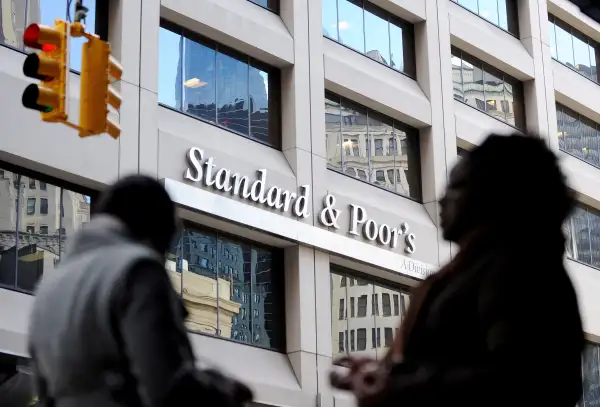S&P to Pay Billions for Being the Watchdog That Didn't Bark
Money is not a client of any investment adviser featured on this page. The information provided on this page is for educational purposes only and is not intended as investment advice. Money does not offer advisory services.

On Tuesday, Standard & Poor's (S&P), agreed to pay $1.375 billion to settle claims by the Department of Justice and multiple state governments that the ratings agency defrauded investors in the lead up to the financial crisis.
As a bond-rating agency, S&P was responsible for keeping banks and other major financial institutions honest. Its apparently intentional failure to do so shows how one of the guard dogs of the financial system was co-opted by the very people it was meant to police.
Perverse incentives
Standard & Poors is one of three companies designated by the Securities and Exchange Commission as Nationally Recognized Statistical and Ratings Organizations (NRSROs). Their job is to rate the safety of bonds and thereby provide a kind of warning label for investors. The safest bonds—those issued by companies deemed most credit-worthy and best able to meet their financial commitments—are designated AAA; debt rated BB or lower is considered below investment grade, or "junk" in common parlance.
While companies like S&P theoretically exist to protect investors, much of their revenue comes from the lenders whose securities they were rating. As Kathleen Engel and Patricia McCoy describe in their book The Subprime Virus, ratings agencies generally bring in 1% of any debt deal they rate. Between 2000 and 2007, the three agencies underwrote $2.1 trillion in subprime mortgage-backed securities.
With that kind of money at stake, there was an obvious incentive for these firms to issue ratings that are favorable to the interests of their paying clients.
S&P and the financial crisis
According to a statement of facts released by the Justice Department and "agreed" to by S&P, that seems to be exactly what the company did. Contrary to the company's Code of Practices and Procedures—which promises that its ratings "shall not be affected by an existing or a potential business relationship"—S&P "toned down and slowed down" the roll out of a new rating model for so-called Collateralized Debt Obligations (CDOs) after an unnamed investment bank suggested the system could jeopardize "potential business opportunities."
The statement also shows S&P delayed for months ratings revisions on securities it knew to be failing. As far back as November 2006 the head of S&P's residential mortgage-backed securities group sent two senior executives a spreadsheet—revealingly entitled "Subprime_Trouble.XLS"—warning that many S&P-rated loans were in serious trouble and should be downgraded.
Multiple sources told the Justice Department investigators that the group's head frequently complained that her concerns were ignored because downgrades would hurt S&P's rating business. A public warning that major downgrades were imminent was delayed until July, 2007.
Aftermath
The rest, as they say, is history. The housing crash brought to light the incestuous relationship between rating agencies and bond issuers, and eventually resulted in lawsuits like this one. Though S&P was not forced to admit wrong-doing, the case and subsequent settlement revealed a trove of information about the inner workings of the agency and wiped away a full year of the company's profits.
Dodd-Frank imposed a number of additional regulations on ratings agencies, including new rules regarding conflicts of interest. But S&P's payout is a reminder that it wasn't just crooked banks and lenders that tanked the financial sector. The supposed watchdogs were involved as well.
